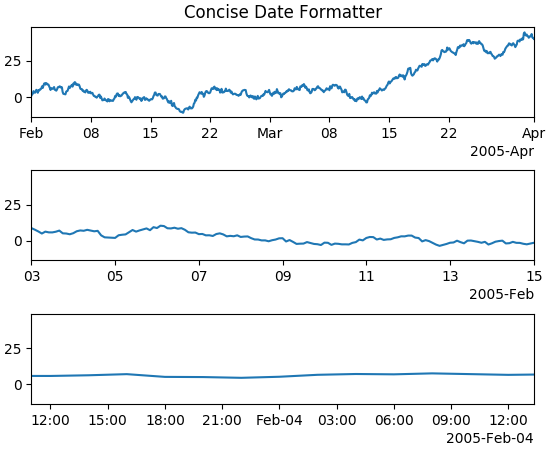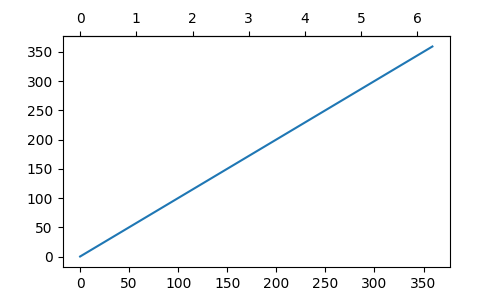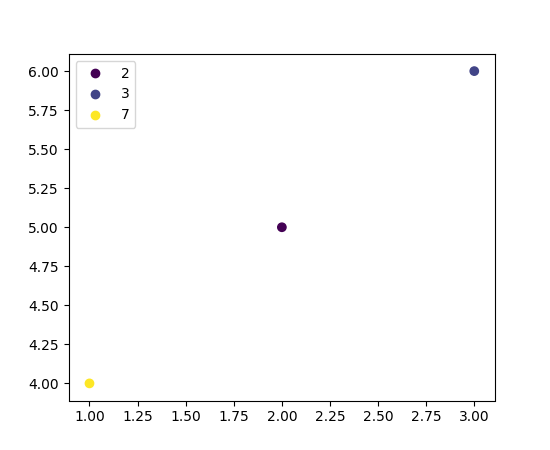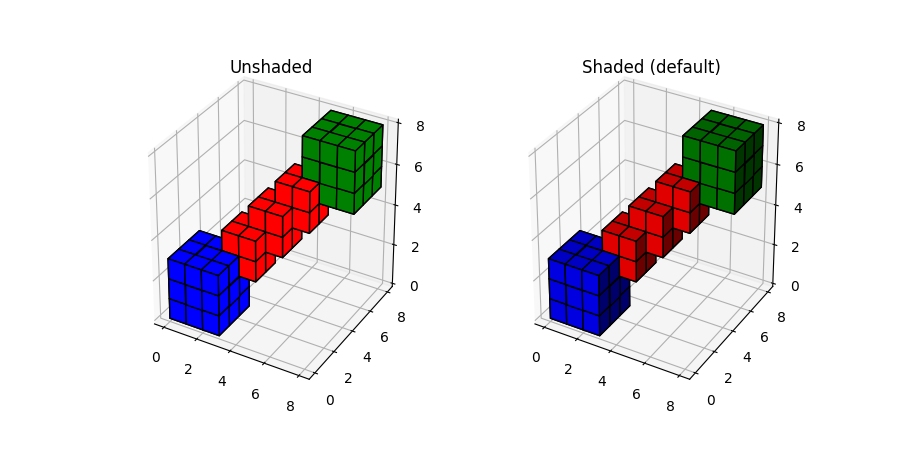For a list of all of the issues and pull requests since the last revision, see the GitHub Stats.
Table of Contents
Axis.get_inverted and Axis.set_invertedEngFormatter now accepts usetex, useMathText as keyword only argumentssave()cache_frame_data keyword-only argument into animation.FuncAnimationmatplotlib.widgets.Slider to have vertical orientationConciseDateFormatter¶The automatic date formatter used by default can be quite verbose. A new formatter can be accessed that tries to make the tick labels appropriately concise.
(Source code, png, pdf)

A new method provides the ability to add a second axis to an existing
axes via Axes.secondary_xaxis and Axes.secondary_yaxis. See
Secondary Axis for examples.
(Source code, png, pdf)

FuncScale for arbitrary axes scales¶A new FuncScale class was added (and FuncTransform)
to allow the user to have arbitrary scale transformations without having to
write a new subclass of ScaleBase. This can be accessed by:
ax.set_yscale('function', functions=(forward, inverse))
where forward and inverse are callables that return the scale
transform and its inverse. See the last example in
Scales.
A new method for creating legends for scatter plots has been
introduced. Previously, in order to obtain a legend for a
scatter() plot, one could either plot several
scatters, each with an individual label, or create proxy artists to
show in the legend manually. Now,
PathCollection provides a method
legend_elements() to obtain the
handles and labels for a scatter plot in an automated way. This makes
creating a legend for a scatter plot as easy as
(Source code, png, pdf)

An example can be found in Automated legend creation.
Previous versions of matplotlib required a Framework build of python to work. The app type was updated to no longer require this, so the MacOSX backend should work with non-framework python.
This also adds support for the MacOSX backend for PyPy3.
Accessing Figure.frameon (including via get_frameon and set_frameon
now directly forwards to the visibility of the underlying Rectangle artist
(Figure.patch.get_frameon, Figure.patch.set_frameon).
Matplotlib uses Pillow to handle saving to the JPEG and TIFF formats. The
savefig() function gained a pil_kwargs keyword argument, which can
be used to forward arguments to Pillow's pillow.Image.save().
The pil_kwargs argument can also be used when saving to PNG. In that case,
Matplotlib also uses Pillow's pillow.Image.save() instead of going through its
own builtin PNG support.
inaxes method to FigureCanvasBase¶The FigureCanvasBase class has now an inaxes
method to check whether a point is in an axes and returns the topmost
axes, else None.
This leads to faster import/runtime performance in some cases. The backend will fall back to cairocffi in case pycairo isn't available.
Previously, spines of axes_grid1 and axisartist Axes would be drawn twice,
leading to a "bold" appearance. This is no longer the case.
ArtistInspector.get_aliases previously returned the set of aliases as
{fullname: {alias1: None, alias2: None, ...}}. The dict-to-None mapping
was used to simulate a set in earlier versions of Python. It has now been
replaced by a set, i.e. {fullname: {alias1, alias2, ...}}.
This value is also stored in ArtistInspector.aliasd, which has likewise
changed.
ConnectionPatch accepts arbitrary transforms¶Alternatively to strings like "data" or "axes fraction"
ConnectionPatch now accepts any Transform
as input for the coordsA and coordsB argument. This allows to
draw lines between points defined in different user defined coordinate
systems. Also see the Connect Simple01 example.
Lines created with the 3d projection in mplot3d can now access the
data using get_data_3d() which returns a
tuple of array_likes containing the (x, y, z) data. The equivalent
set_data_3d can be used to modify the data of
an existing Line3D.
Axes3D.voxels now shades the resulting voxels¶The voxels() method now takes a
shade parameter that defaults to True. This shades faces based
on their orientation, behaving just like the matching parameters to
trisurf() and
bar3d(). The plot below shows how
this affects the output.
(Source code, png, pdf)

Axis.get_inverted and Axis.set_inverted¶The Axis.get_inverted and Axis.set_inverted methods query and set whether
the axis uses "inverted" orientation (i.e. increasing to the left for the
x-axis and to the bottom for the y-axis).
They perform tasks similar to Axes.xaxis_inverted,
Axes.yaxis_inverted, Axes.invert_xaxis, and
Axes.invert_yaxis, with the specific difference that
Axes..set_inverted makes it easier to set the invertedness of an
axis regardless of whether it had previously been inverted before.
Default minor tick spacing was changed from 0.625 to 0.5 for major ticks spaced 2.5 units apart.
EngFormatter now accepts usetex, useMathText as keyword only arguments¶A public API has been added to EngFormatter to control how the
numbers in the ticklabels will be rendered. By default,
useMathText evaluates to
rcParams["axes.formatter.use_mathtext'"] and usetex evaluates
to rcParams["'text.usetex'"].
If either is True then the numbers will be encapsulated by $
signs. When using TeX this implies that the numbers will be shown
in TeX's math font. When using mathtext, the $ signs around
numbers will ensure unicode rendering (as implied by mathtext). This
will make sure that the minus signs in the ticks are rendered as the
unicode=minus (U+2212) when using mathtext (without relying on the
fix_minus method).
Figure managers now support a button_press event for mouse
buttons, similar to the key_press events. This allows binding
actions to mouse buttons (see MouseButton) The first application of
this mechanism is support of forward/backward mouse buttons in figures
created with the Qt5 backend.
save()¶The method Animation.save gained an optional
progress_callback argument to notify the saving progress.
cache_frame_data keyword-only argument into animation.FuncAnimation¶matplotlib.animation.FuncAnimation has been caching frame data by
default; however, this caching is not ideal in certain cases e.g. When
FuncAnimation needs to be only drawn(not saved) interactively and
memory required by frame data is quite large. By adding
cache_frame_data keyword-only argument, users can now disable this
caching; thereby, this new argument provides a fix for issue
#8528.
We acknowledge that most people want to watch a gif more than once. Saving an animation as a gif with PillowWriter now produces an endless looping gif.
matplotlib.widgets.Slider to have vertical orientation¶The matplotlib.widgets.Slider widget now takes an optional
argument orientation which indicates the direction
('horizontal' or 'vertical') that the slider should take.
When a colorbar is present, its formatter is now used to format the image
values under the mouse cursor in the status bar. For example, for an image
displaying the values 10,000 and 10,001, the statusbar will now (using default
settings) display the values as 10000 and 10001), whereas both values
were previously displayed as 1e+04.
The button attribute of MouseEvent instances can take the values
None, 1 (left button), 2 (middle button), 3 (right button), "up" (scroll), and
"down" (scroll). For better legibility, the 1, 2, and 3 values are now
represented using the IntEnum class matplotlib.backend_bases.MouseButton,
with the values MouseButton.LEFT (== 1), MouseButton.MIDDLE (== 2),
and MouseButton.RIGHT (== 3).
This includes device files; in particular, on Unix systems, one can set
MATPLOTLIBRC to /dev/null to ignore the user's matplotlibrc file and
fall back to Matplotlib's defaults.
As a reminder, if MATPLOTLIBRC points to a directory, Matplotlib will try
to load the matplotlibrc file from $MATPLOTLIBRC/matplotlibrc.
pgf.preamble and text.latex.preamble in MATPLOTLIBRC file¶Previously, the rc file keys rcParams["pgf.preamble"] (default: '') and
rcParams["text.latex.preamble"] (default: '') were parsed using commas as separators. This
would break valid LaTeX code, such as:
\usepackage[protrusion=true, expansion=false]{microtype}
The parsing has been modified to pass the complete line to the LaTeX system, keeping all commas. Passing a list of strings from within a Python script still works as it used to.
matplotlib.set_loglevel / pyplot.set_loglevel can be called to
display more (or less) detailed logging output.